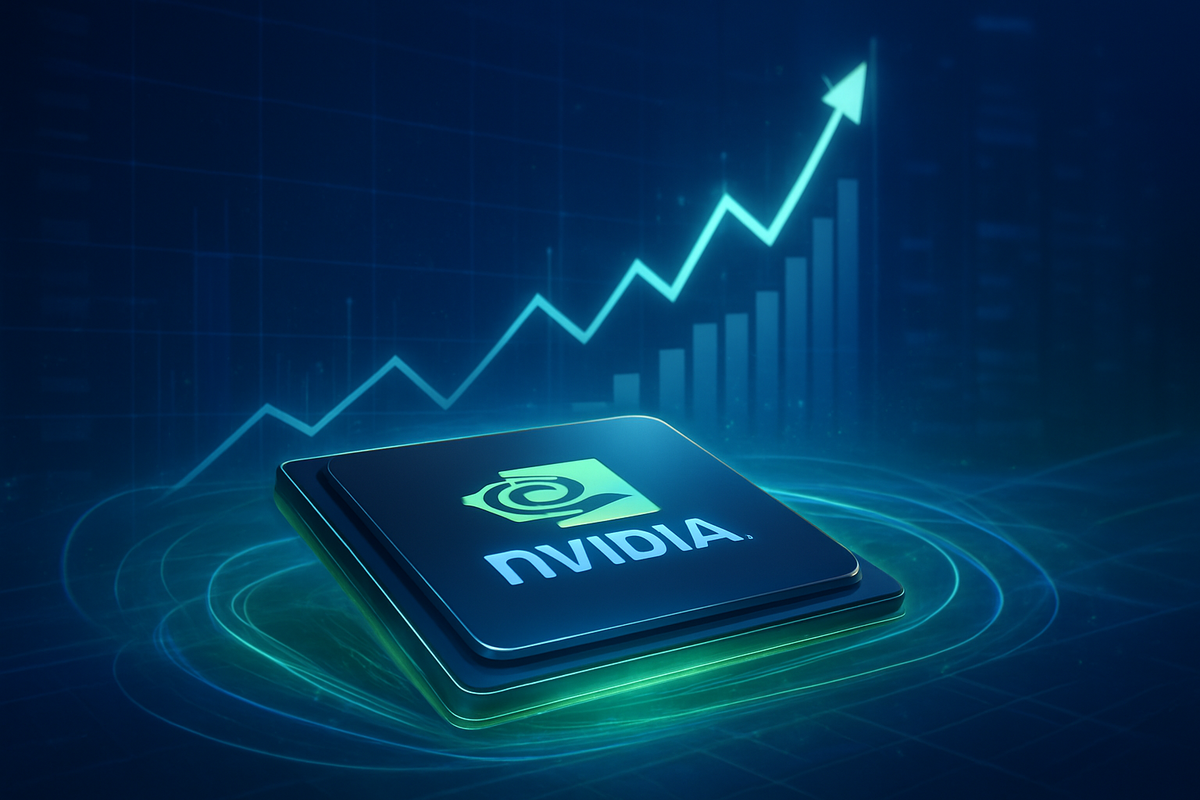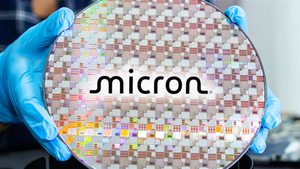
NVIDIA (NASDAQ: NVDA) emerged as a top performer in the stock market on Friday, November 14, 2025, closing with a robust 1.8% gain. This significant rebound, which saw the stock recover from an earlier dip, was largely fueled by a flurry of optimistic analyst upgrades and reiterations of "Buy" ratings from prominent financial institutions. The positive sentiment surrounding the semiconductor giant comes just days before its highly anticipated Q3 FY26 earnings report, setting a bullish tone for investors keenly watching the company's trajectory in the booming artificial intelligence (AI) and data center markets.
The market's enthusiastic response underscores a growing confidence in NVIDIA's continued dominance and future growth prospects. With multiple analysts raising their price targets and citing strong demand for NVIDIA's next-generation platforms, the company's performance today signals a potential turning point, reinforcing its position as a critical player in the evolving technological landscape and offering a compelling narrative for investors seeking high-growth opportunities.
Detailed Coverage of the Event: A Wave of Bullish Sentiment
NVIDIA's stock performance on November 14, 2025, was a testament to its resilience and the powerful impact of analyst endorsements. The stock, which had previously closed at $186.86, experienced an initial decline during the trading day, facing a 3.4% loss before executing a remarkable recovery to close around $190.17, marking a 1.8% gain. This impressive turnaround occurred amidst a broader market swing, highlighting the strong underlying investor confidence in NVIDIA.
The catalyst for this renewed optimism was a series of significant analyst upgrades and reaffirmations of bullish ratings in the days leading up to and including November 14th, all preceding NVIDIA's Q3 FY26 earnings report scheduled for November 19th. Among the most impactful was Morgan Stanley's (NYSE: MS) Joseph Moore, who reiterated a "Buy" rating and raised his price target from $210 to $220. Moore's upgrade was predicated on expectations for NVIDIA to deliver "the strongest result seen in the last few quarters," driven by robust demand for the company's Blackwell platform, which is rapidly moving into full production. Furthermore, CEO Jensen Huang's recent comments hinting at potential increases of $70–$80 billion in estimates for the next five quarters significantly bolstered this positive outlook.
Wells Fargo's (NYSE: WFC) Aaron Rakers also reaffirmed an "Overweight" rating, substantially increasing his price target from $220 to $265, projecting NVIDIA to achieve $50–$60 billion in revenue. On November 13, 2025, Oppenheimer's (NYSE: OPY) Rick Schafer maintained an "Outperform" rating, elevating his price target from $225 to $265. Schafer's rationale centered on the robust demand for NVIDIA's new GB300 Ultra chips and the continuous increase in capital expenditure by cloud service providers and hyperscalers. Other notable upgrades included Keybanc setting a $250 price target with an "Overweight" rating, Susquehanna with a $230 target and "Positive" rating, Citigroup (NYSE: C) at $220 with a "Buy" rating, and Goldman Sachs (NYSE: GS) with a $240 target and "Buy" rating. The consensus on Wall Street remains a "Strong Buy" for NVDA, with an average price target of $240, implying a 28.44% upside potential over the next twelve months. Analysts largely view the recent stock correction, despite a 35% year-to-date gain, as an attractive entry point ahead of the upcoming earnings.
Impact on Companies: Winners and Watchers in the AI Race
The latest surge in NVIDIA's (NASDAQ: NVDA) stock, propelled by widespread analyst upgrades, has significant implications not only for the company itself but also for its competitors and key partners within the technology ecosystem. As the undisputed leader in AI accelerators and graphics processing units (GPUs), NVIDIA stands to be the primary beneficiary of this renewed bullish sentiment. The increased price targets and optimistic revenue projections directly translate into higher market capitalization and investor confidence, potentially attracting more institutional and retail investment. The strong demand for its Blackwell platform and GB300 Ultra chips suggests a robust sales pipeline and continued revenue growth, solidifying its market dominance in the high-growth AI and data center segments. This positive momentum could also empower NVIDIA to further invest in research and development, maintaining its technological edge and expanding its product offerings.
However, NVIDIA's stellar performance casts a long shadow over its direct competitors. Advanced Micro Devices (NASDAQ: AMD) and Intel (NASDAQ: INTC) are the most prominent rivals vying for a share in the lucrative AI and data center chip markets. While AMD has made strides with its Instinct MI series of accelerators, and Intel is pushing its Gaudi and Xeon platforms, NVIDIA's continued innovation and market traction, as highlighted by these upgrades, intensify the competitive pressure. A stronger NVIDIA could make it harder for these companies to capture significant market share, potentially impacting their revenue growth and profitability in the AI sector. Investors might shift their focus and capital towards NVIDIA, perceiving it as a safer and more promising bet in the immediate term, which could put downward pressure on the stock performance of its rivals.
On the other hand, NVIDIA's success is intertwined with the fortunes of its partners, particularly the cloud service providers (CSPs) and hyperscalers that are heavily investing in AI infrastructure. Companies like Amazon Web Services (NASDAQ: AMZN), Microsoft Azure (NASDAQ: MSFT), and Google Cloud (NASDAQ: GOOGL) are massive purchasers of NVIDIA's GPUs to power their AI services. Increased demand for NVIDIA's chips, as noted by analysts, indicates that these CSPs are ramping up their capital expenditures to meet the burgeoning demand for AI computing. This could lead to increased business for NVIDIA, but also signifies a substantial investment by the CSPs, which they expect to recoup through robust AI service offerings. The ripple effect extends to the broader semiconductor supply chain, including foundries like Taiwan Semiconductor Manufacturing Company (NYSE: TSM), which manufactures NVIDIA's chips, likely seeing increased orders and utilization rates.
Wider Significance: Fueling the AI Revolution and Beyond
NVIDIA's recent market surge and analyst endorsements are not isolated events; they are deeply embedded within broader industry trends that are reshaping the technological landscape. At its core, this event signifies the accelerating pace of the artificial intelligence revolution. The demand for NVIDIA's advanced GPUs and platforms like Blackwell and GB300 Ultra chips underscores the insatiable need for high-performance computing power required to train and deploy increasingly complex AI models across various industries, from autonomous vehicles to scientific research and enterprise solutions. This continuous demand reinforces the long-term growth trajectory of the AI market and positions NVIDIA as a foundational enabler of this transformative technology.
The ripple effects extend far beyond the immediate semiconductor market. The intense capital expenditure by cloud service providers and hyperscalers to acquire NVIDIA's technology highlights the ongoing expansion of data center infrastructure globally. This trend is driven by the need to support not only AI workloads but also the ever-growing demand for cloud computing, big data analytics, and other digital services. Consequently, companies involved in data center construction, networking equipment, power solutions, and cooling systems could experience a boost in demand. Furthermore, the advancements in AI hardware could accelerate innovation in software development, enabling new applications and services that were previously computationally unfeasible, thereby creating new market opportunities and disrupting existing business models.
Regulatory and policy implications are also worth noting. As NVIDIA's dominance in AI hardware grows, it may attract increased scrutiny from antitrust regulators, particularly in major markets. Concerns about market concentration and fair competition could lead to investigations or calls for new regulations, potentially impacting NVIDIA's future business practices or acquisition strategies. Geopolitical tensions, particularly concerning semiconductor supply chains and export controls (e.g., U.S. restrictions on advanced chip exports to certain regions), also remain a critical factor. NVIDIA's ability to navigate these complex geopolitical dynamics will be crucial for its sustained global growth. Historically, periods of rapid technological advancement, such as the dot-com boom or the early days of personal computing, have seen similar surges in the valuations of key enablers, often followed by market corrections. However, the fundamental utility and widespread adoption of AI suggest a more sustainable growth trajectory, albeit with inherent market cycles.
What Comes Next: Navigating Opportunities and Challenges
The immediate future for NVIDIA (NASDAQ: NVDA) and the broader market will be significantly shaped by the company's upcoming Q3 FY26 earnings report on November 19, 2025. With analysts setting high expectations based on strong demand for the Blackwell platform and GB300 Ultra chips, a robust earnings beat could further propel the stock and reinforce investor confidence. Conversely, any slight disappointment, even if revenue growth is substantial, could lead to short-term volatility as the market recalibrates. Beyond the earnings call, the successful ramp-up and widespread adoption of the Blackwell platform will be a critical determinant of NVIDIA's sustained growth. The company's ability to meet the burgeoning demand from hyperscalers and enterprise customers while fending off competitive pressures will be paramount.
In the long term, NVIDIA's strategic pivots will focus on expanding its ecosystem and diversifying its revenue streams. While AI accelerators remain central, the company is likely to continue investing in software platforms (e.g., CUDA), networking solutions, and potentially new markets like robotics and industrial metaverse applications. These strategic expansions aim to create stickier customer relationships and reduce reliance on any single product line or market segment. The market opportunities that may emerge include the proliferation of AI at the edge, requiring specialized, power-efficient NVIDIA solutions, and the increasing demand for sovereign AI infrastructure, where nations seek to build their own AI capabilities using advanced hardware.
However, significant challenges loom. Intensifying competition from Advanced Micro Devices (NASDAQ: AMD), Intel (NASDAQ: INTC), and even custom-built AI chips from major tech companies (e.g., Google's (NASDAQ: GOOGL) TPUs) could erode NVIDIA's market share over time. Supply chain constraints, particularly for advanced packaging technologies, could also limit NVIDIA's ability to scale production to meet demand. Furthermore, the cyclical nature of the semiconductor industry, coupled with potential shifts in macroeconomic conditions, always presents a risk. Potential scenarios range from continued exponential growth fueled by relentless AI adoption to periods of consolidation and increased price competition. Investors will be closely watching for NVIDIA's guidance on future quarters, its capital expenditure plans, and any announcements regarding new product roadmaps or strategic partnerships.
Comprehensive Wrap-up: NVIDIA's Enduring Influence
NVIDIA's (NASDAQ: NVDA) 1.8% gain on November 14, 2025, underscored by a chorus of analyst upgrades, serves as a powerful testament to its pivotal role in the ongoing technological revolution. The key takeaways from this event highlight the robust demand for its cutting-edge AI hardware, particularly the Blackwell platform and GB300 Ultra chips, driven by aggressive investments from cloud service providers and hyperscalers. This reaffirms NVIDIA's position not just as a chip maker, but as a fundamental enabler of the artificial intelligence era, with a strong consensus among financial experts pointing towards continued growth.
Moving forward, the market will undoubtedly remain fixated on NVIDIA's trajectory, viewing its performance as a bellwether for the broader AI and semiconductor sectors. The upcoming Q3 FY26 earnings report on November 19th will be a critical juncture, offering deeper insights into the company's financial health and future outlook. While the bullish sentiment is strong, investors should also remain cognizant of the inherent volatility in high-growth technology stocks and the dynamic competitive landscape.
The lasting impact of this event reinforces the notion that AI is not merely a buzzword but a transformative force reshaping industries and economies globally. NVIDIA's sustained innovation and market leadership are crucial for pushing the boundaries of what AI can achieve. For investors, the coming months will be about closely monitoring the actual rollout and adoption rates of new NVIDIA platforms, observing the competitive responses from rivals, and assessing the broader macroeconomic environment. The narrative of NVIDIA's growth story is far from over, and its continued evolution will undoubtedly shape the future of technology and finance for years to come.
This content is intended for informational purposes only and is not financial advice







